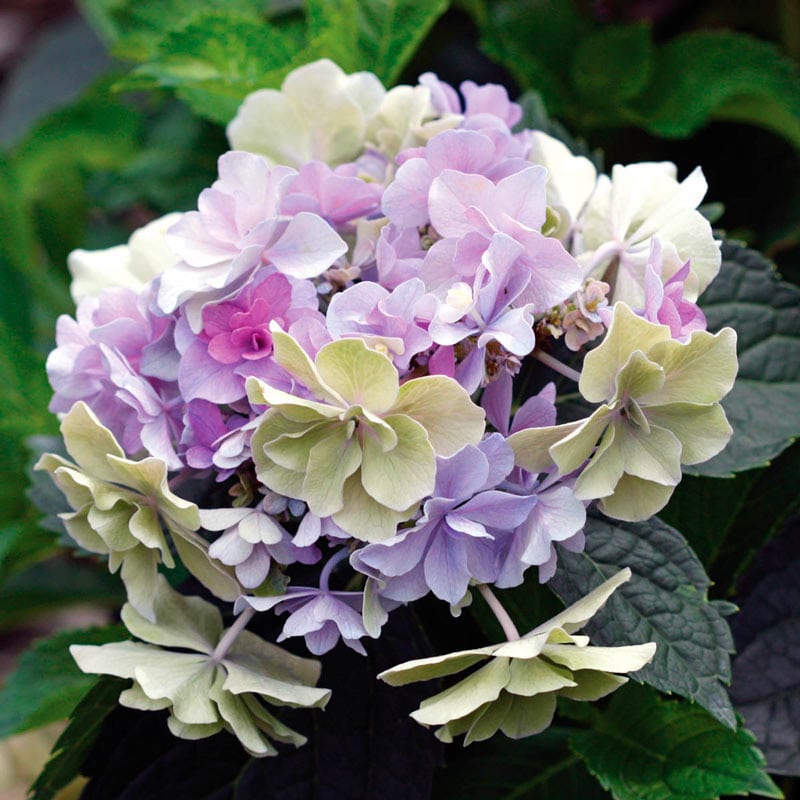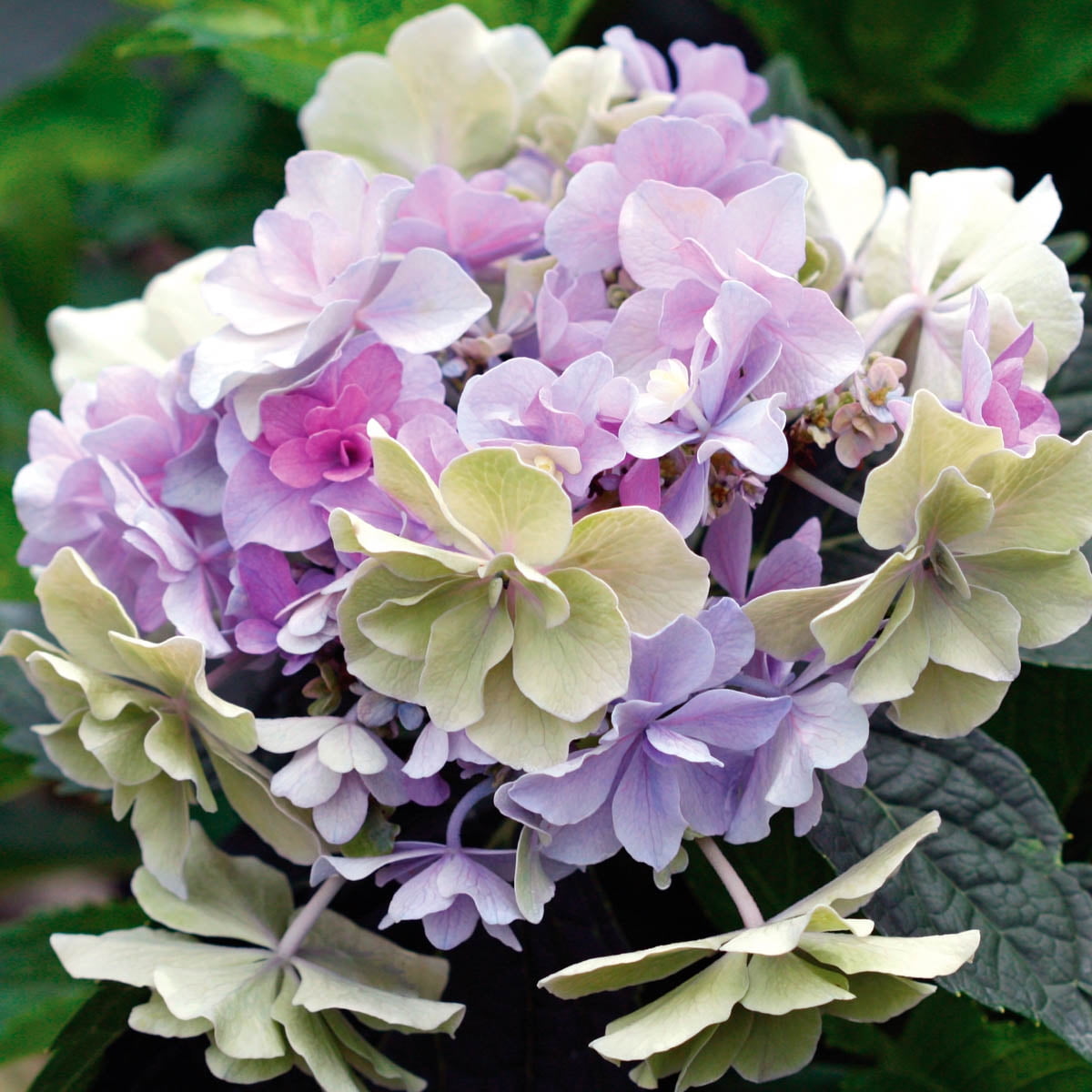Felicity Hydrangea: The Ultimate Guide To Growing And Caring For This Stunning Flower
Felicity hydrangeas are a popular choice for gardeners because of their beautiful flowers and easy care. They are a type of modified lacecap hydrangea, which means that they have double blooms with elongated flower stems hanging along the edges of each flower head. The flowers can be white, pink, or blue, depending on the acidity of the soil.
Felicity hydrangeas are relatively easy to grow, but there are a few things you need to know to keep them healthy and happy. In this blog post, we will discuss everything you need to know about growing and caring for Felicity hydrangeas.
Choosing the right location
The first step to growing Felicity hydrangeas is to choose the right location. They prefer full sun to partial shade, but they can tolerate some direct sunlight. They also need well-drained soil that is rich in organic matter.
Planting
Felicity hydrangeas can be planted in the spring or fall. When planting, dig a hole that is twice as wide and as deep as the root ball. Backfill the hole with soil, being careful not to bury the crown of the plant. Water the plant well after planting.
Watering
Felicity hydrangeas need regular watering, especially during the first year after planting. Water the plant deeply once a week, or more often if the weather is hot or dry.
Fertilizing
Felicity hydrangeas should be fertilized in the spring and fall. Use a balanced fertilizer, such as 10-10-10, and apply it according to the package directions.
Pruning
Felicity hydrangeas do not need to be pruned heavily. However, you should deadhead the flowers after they have finished blooming. This will encourage new growth and flowering. You can also prune the plant in the spring to shape it or to remove any dead or diseased branches.
Pests and diseases
Felicity hydrangeas are generally resistant to pests and diseases. However, they can be susceptible to aphids, scale, and powdery mildew. If you see any pests or diseases, treat them immediately with an appropriate insecticide or fungicide.
Winter care
Felicity hydrangeas are hardy in USDA zones 4-9. In colder climates, they may need to be protected from winter cold. You can do this by covering the plant with a burlap sack or by wrapping it with a layer of insulation.
Enjoying your Felicity hydrangeas
With proper care, Felicity hydrangeas will reward you with beautiful flowers for many years to come. They are a great choice for any garden, and they are sure to add a touch of beauty and elegance.
Felicity hydrangea is a beautiful and versatile shrub that can add a touch of elegance to any garden. With its large, double blooms that can range in color from pink to blue, Felicity is sure to turn heads. But what many people don't know is that Felicity is also a very easy plant to care for.
If you're thinking about adding a Felicity hydrangea to your garden, I encourage you to visit . This website has a wealth of information about Felicity hydrangea, including how to plant, care for, and propagate it. You'll also find beautiful photos of Felicity hydrangeas in bloom, so you can get a good idea of what to expect.
FAQ of felicity hydrangea
Q: What is a Felicity hydrangea?
A Felicity hydrangea is a type of modified lacecap hydrangea. It is known for its large, double blooms that are a beautiful shade of pink. Felicity hydrangeas are relatively easy to care for and can be grown in a variety of climates.
Q: What are the best conditions for growing Felicity hydrangeas?
Felicity hydrangeas prefer full to partial shade and moist, well-drained soil. They are tolerant of a wide range of pH levels, but they will produce the best blooms in acidic soil.
Q: How do I care for Felicity hydrangeas?
Felicity hydrangeas need regular watering, especially during the hot summer months. They should be fertilized once in the spring and again in the fall. To encourage large blooms, you can deadhead the flowers after they have faded.
Q: What are some common problems with Felicity hydrangeas?
The most common problems with Felicity hydrangeas are leaf spot, powdery mildew, and aphids. Leaf spot can be treated with a fungicide, while powdery mildew can be controlled with a horticultural oil. Aphids can be removed by hand or with insecticidal soap.
Q: How do I propagate Felicity hydrangeas?
Felicity hydrangeas can be propagated by division or by cuttings. To divide a hydrangea, simply dig up the plant and separate the roots into two or more sections. To take cuttings, cut a 6-inch piece of stem from a healthy plant and remove the lower leaves. Dip the cutting in rooting hormone and plant it in a pot of moist potting soil.
Image of felicity hydrangea
- Image 1: A full bloom of a felicity hydrangea in a garden. The flowers are a light pink color with a darker pink center.

- Image 2: A close-up of a single felicity hydrangea flower. The petals are delicate and have a wavy edge.

- Image 3: A group of felicity hydrangeas in different stages of bloom. The flowers range in color from light pink to dark pink.

- Image 4: A felicity hydrangea in a vase. The flowers are arranged in a loose bouquet.

- Image 5: A felicity hydrangea in a terracotta pot. The plant is surrounded by lush green foliage.

Post a Comment for "Felicity Hydrangea: The Ultimate Guide To Growing And Caring For This Stunning Flower"